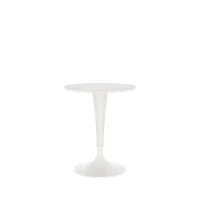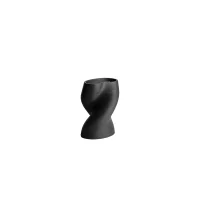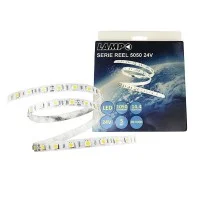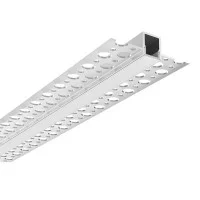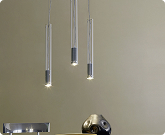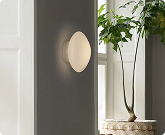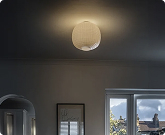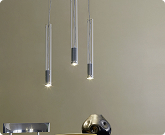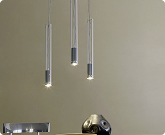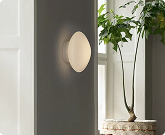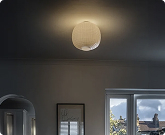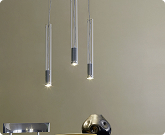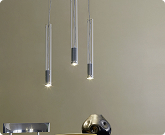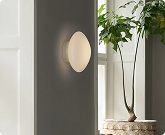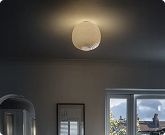Lux vs Lumen: what are they and what are the differences?
When talking about lighting, two terms that are often encountered are "lux" and "lumen". If you have ever wondered what exactly they mean and what is the difference between them, you are in the right place.
In this article, we will explore what lux and lumen are, their differences, how they convert between them, the units of measurement, and in which contexts it is best to use one rather than the other.
What are Lux and Lumen?

Lux is a unit of measurement of luminance, which indicates the amount of visible light per unit area. In simpler terms, it measures the amount of light reaching a certain area. For example, if you imagine a room, the lux would tell you how bright that room is at a specific point.
On the other hand, lumen is a unit of measurement of luminous flux, which indicates the total amount of light emitted by a light source in all directions. It's like the total amount of light a light bulb emits, regardless of where that light goes. So if we're talking about a light bulb, the lumen would tell you how bright that light bulb is overall.
Differences between Lux and Lumen
The main difference between lux and lumen is that lux measures brightness per unit area, while lumen measures the total brightness emitted by a light source.
Conversion between Lux and Lumen
The conversion between lux and lumen depends on the area the light is impacting. For example, if you know how many lumens a source emits and you want to know how many lux there are at a certain distance, you need to take into account the area over which that light is spreading.
However, the conversion formula is:
Lux= Lumen/ Area in square meters
Units of measurement and applications
Lux is measured in lumens per square meter (lm/m²), while lumen is simply measured in lumens (lm). These units of measurement are therefore fundamental for determining the lighting needed in different setting and applications.
How many lumens are needed per square meter?

The amount of lumens needed per square meter varies depending on the type of context and intended use. For example, for general office lighting, you may need around 500 lumens per square meter.
However, for a more detailed setting like a laboratory, you may need over 1000 lumens per square meter.
Contexts of use
Lux is particularly important when designing lighting systems for specific areas or setting, such as offices, shops, or public areas. Measuring brightness in lux helps you make sure there is enough light to carry out daily tasks comfortably and safely.
On the other hand, lumen is more useful when evaluating the performance of a specific light source, such as a light bulb or projector. Knowing how many lumens a light source emits helps choose the right lighting for a given setting.
Practical examples: 100 lux how many lumens are and 150 lux how many lumens are
To better understand the difference between lux and lumen, consider these examples:
If you have a light bulb that emits 1000 lumens and you want to know how much light reaches the floor of a 10 square meter room, use the formula to convert lumens into lux. So, 1000 lumens divided by 10 square meters, you will get 100 lux.
Similarly, if you need 150 lux in a 20 square meter room, you will need to calculate how many lumens are needed. Multiply 150 lux by 20 square meters, you will get 3000 lumens.
Differences between Lumen, Lux, Watt, Kelvin and LED

In addition to lux and lumen, there are other important measurements and concepts to consider when it comes to lighting. These include watts, Kelvin, and LED light sources. Let's see how they differ:
Watt: Watt is a unit of electrical power, not a direct measure of brightness. However, it is often associated with traditional light bulbs as an indication of their brightness. With incandescent bulbs, for example, a higher wattage usually indicates a brighter light. However, with the advent of energy-saving light bulbs and LEDs, the correlation between wattage and brightness has become less direct, in fact with LED technology it is always better to check the luminous flux and the energy class, not the consumption (Watt).
Read the differences between Lumen and Watt in this article!
Kelvin (K): Degrees Kelvin are used to measure the color temperature of light emitted from a light source. The higher the number of Kelvin, the colder and bluer the light appears. Conversely, fewer Kelvin degrees indicate a warmer, more yellowish light. This measurement is important to create the desired atmosphere in an context and to ensure that the light is suited to the visual needs and comfort of the users.
Do you want to know more about Kelvin scale? Click this link!
LED (Light Emitting Diode): LED bulbs have become increasingly popular due to their energy efficiency, longer lifespan, and ability to adjust color temperature. Compared to traditional incandescent and fluorescent bulbs, LED bulbs use less energy for the same amount of light emitted and offer greater flexibility in adapting to different lighting needs.
Find out everything about LED bulbs!
In conclusion, lux and lumen are both units of measurement of brightness and are used in different contexts since they offer different information about light.
Watts, on the other hand, indicate electrical power, Kelvin degrees determine the color of light while LED bulbs represent an innovative and efficient lighting technology. Therefore understanding the difference between them is essential to design effective lighting systems and to select the appropriate light sources for different lighting needs.
Find out all the bulbs on our Diffusione Luce website!
Written by Alice Pruccoli
Share this content
